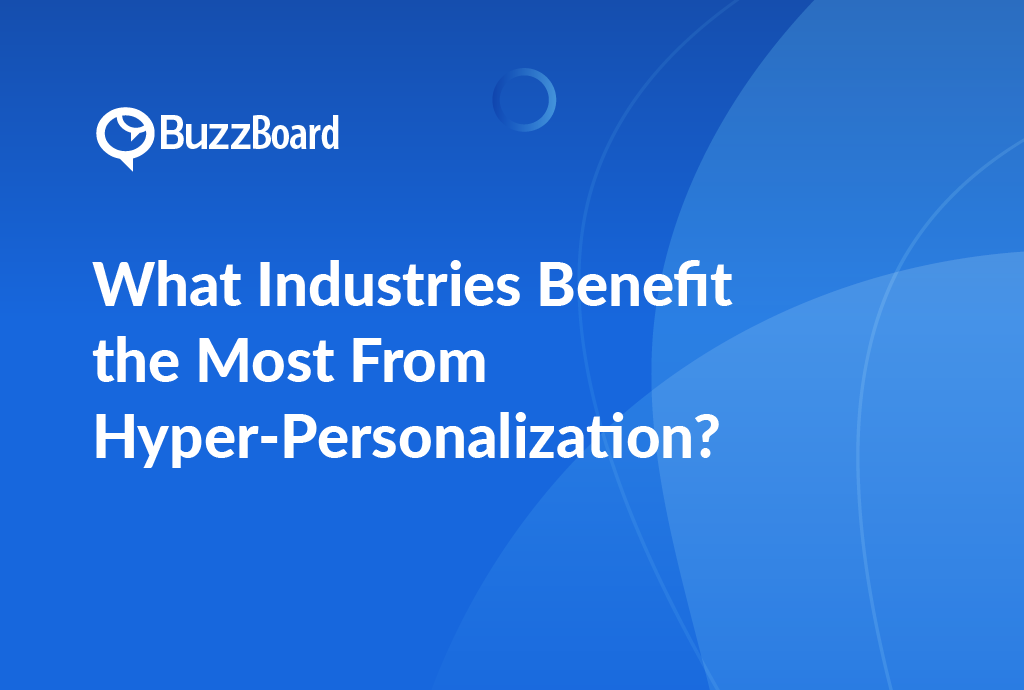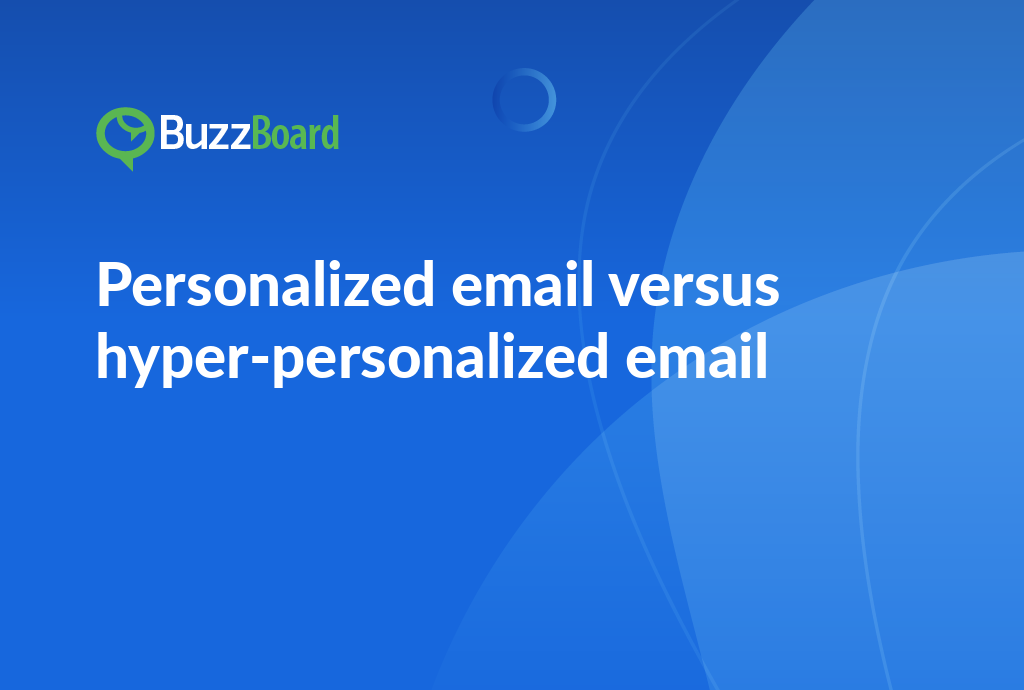Hyper-personalization can significantly benefit industries that rely heavily on customer relationships, loyalty, and retention. According to BuzzBoard, industries that benefit the most from hyper-personalization include:
- Healthcare: Tailored treatment plans and personalized patient experiences can lead to improved health outcomes and increased patient satisfaction.
- Finance: Hyper-personalized financial services, such as customized investment portfolios and tailored insurance plans, can increase customer loyalty and retention.
- Retail: Personalized product recommendations, loyalty programs, and targeted marketing can drive sales and customer engagement.
- Travel: Hyper-personalized travel experiences, including customized itineraries and tailored hotel stays, can increase customer satisfaction and loyalty.
By leveraging data and technology, businesses in these industries can create highly personalized experiences that drive customer loyalty, retention, and ultimately, revenue growth.
The Concept of Hyper-Personalization and Its Growing Importance in Today’s Digital Marketing Landscape
The concept of hyper-personalization plays a critical role in today’s digital marketing landscape. This practice involves the analysis and collection of data on a customer’s online behavior, preferences, and personal characteristics. The purpose? To tailor products, services, and experiences to cater uniquely and efficiently to individual needs.
Sales representatives in digital marketing agencies must realize that a broad range of industries, including e-commerce, hospitality, healthcare, and the service industry, benefit significantly from hyper-personalization. These sectors often interact directly and extensively with consumers, making hyper-personalization a potentially advantageous venture.
Embracing hyper-personalization is a crucial step towards revolutionizing the way businesses interact with their customers, ultimately leading to increased customer satisfaction, boosted sales, and long-term loyalty. To achieve this, it is essential for businesses to develop a deep understanding of their customers’ needs, preferences, and behaviors. This knowledge can be leveraged to deliver a first-rate, individualized experience that resonates with each customer, setting the stage for a lifelong relationship.
Sales representatives play a vital role in conveying the importance of hyper-personalization to their clients, particularly those small and local businesses that can greatly benefit from this approach. By providing a tailored service, these businesses can engage their customers in a more meaningful way, fostering a sense of connection and loyalty that is essential for long-term success.
In today’s competitive marketplace, where customers are bombarded with countless marketing messages and offers, it is no longer sufficient to simply understand the concept of hyper-personalization. Rather, agencies must actively implement this strategy as a core component of their digital marketing approach. This requires a willingness to invest time and resources in developing a deep understanding of their target audience, as well as the ability to leverage data and technology to deliver personalized experiences that meet the unique needs of each customer.
The benefits of hyper-personalization are undeniable. By providing customers with relevant, timely, and personalized content, businesses can increase engagement, drive conversions, and build brand loyalty. Moreover, hyper-personalization allows businesses to differentiate themselves from their competitors, establishing a unique identity and voice that resonates with their target audience.
Hyper-personalization is not just a buzzword or a fleeting trend – it is the future of digital marketing. As the digital landscape continues to evolve, businesses that fail to adopt a hyper-personalization strategy will be left behind, struggling to compete in a marketplace where customers are increasingly demanding personalized experiences. By embracing hyper-personalization, businesses can establish a competitive edge, drive growth, and build lasting relationships with their customers.
Types of Industries That Particularly Stand to Benefit From Adopting Hyper-Personalization Strategies
Hyper-personalization has emerged as a crucial strategy for businesses seeking to outmaneuver their competitors and foster deeper connections with their customers. By leveraging advanced data analytics, AI-powered technologies, and sophisticated marketing tools, companies can create tailored experiences that resonate with individual customers, leading to increased engagement, loyalty, and ultimately, revenue growth.
The retail industry is a prime example of the transformative power of hyper-personalization. With the rise of e-commerce, retailers can now customize products, services, and content to meet the unique preferences and needs of each customer. This personalized approach enables businesses to create a seamless and immersive shopping experience, driving customer satisfaction, loyalty, and ultimately, repeat business. For instance, a fashion brand can use hyper-personalization to offer customers tailored product recommendations based on their purchase history, browsing behavior, and style preferences. Similarly, a beauty company can create customized skincare routines and product recommendations based on individual skin types and concerns.
The healthcare industry is another sector that has seen significant benefits from adopting hyper-personalization. By leveraging patient data and advanced analytics, healthcare providers can create tailored treatment plans, appointment reminders, and health-tracking apps that cater to the unique needs and preferences of each patient. This personalized approach enables healthcare professionals to deliver more effective care, improve patient outcomes, and enhance the overall patient experience.
The finance sector is also a prime candidate for hyper-personalization. From online banking portals that adapt to individual user preferences to personalized investment advice based on users’ financial habits and goals, hyper-personalization can help financial institutions create optimal customer experiences and promote customer retention. For instance, a bank can use hyper-personalization to offer customers tailored financial products and services, such as credit cards or loans, based on their individual financial profiles and goals.
Digital marketing professionals working with small and local businesses should prioritize advocating for the adoption of hyper-personalization. By leveraging hyper-personalization, these businesses can create a competitive edge in their respective industries, improve customer experience, bolster brand loyalty, and maximize their marketing budgets. For instance, a local coffee shop can use hyper-personalization to offer customers personalized promotions and rewards based on their purchase history and loyalty program participation. Similarly, a small e-commerce retailer can use hyper-personalization to create customized product recommendations and offers based on individual customer preferences and behaviors.
Hyper-personalization is a game-changing strategy that can help businesses across various industries create deeper connections with their customers, drive engagement, and ultimately, achieve long-term success. By leveraging advanced technologies, data analytics, and sophisticated marketing tools, businesses can create tailored experiences that resonate with individual customers, leading to increased loyalty, retention, and revenue growth. As the digital landscape continues to evolve, hyper-personalization will remain a critical tactic for businesses seeking to outpace competition and thrive in an increasingly crowded and competitive market.
Highlight Case Studies of Industries That Received the Biggest Benefits From Implementing Hyper-Personalization in Their Marketing Tactics
Hyper-personalization is revolutionizing the way businesses connect with their customers, transforming the marketing landscape across various industries. By leveraging advanced data analytics and machine learning algorithms, companies are able to tailor their messages, products, and services to individual customers, fostering deeper relationships and driving business growth.
The retail industry has been at the forefront of this trend, with e-commerce giants like Amazon leading the charge. By analyzing a customer’s past purchases, search history, and browsing habits, retailers can suggest products that are highly relevant to their interests and needs. A case study by Neil Patel highlights the significant impact of hyper-personalization on sales, with a notable uptick in revenue and a corresponding boost in customer satisfaction and loyalty. This approach enables retailers to create a more intimate and personalized shopping experience, increasing the likelihood of repeat business and positive word-of-mouth.
The finance industry has also seen significant benefits from hyper-personalization. Financial institutions are now using data and analytics to provide personalized services based on a client’s behavioral patterns and financial history. A case study by Adobe reveals that this approach has led to enhanced customer engagement and retention, as well as increased revenue and profitability. By offering tailored financial solutions and advice, financial institutions can build stronger relationships with their customers, increasing loyalty and reducing churn.
The travel and hospitality industry is another sector that has been transformed by hyper-personalization. Hotels.com, for example, uses this strategy to deliver personalized offers, destination suggestions, and special deals to customers, leading to increased bookings and revenue. By analyzing a customer’s travel preferences, booking history, and search behavior, hotels can offer targeted promotions and recommendations that are highly relevant to their needs and interests.
In essence, hyper-personalization enables businesses to develop a deep understanding of their customers’ needs, preferences, and inclinations. By leveraging this insight, companies can overhaul their marketing efforts and see significant improvements in customer engagement and revenue. This approach requires a data-driven mindset, with businesses needing to collect, analyze, and act on large amounts of customer data to deliver personalized experiences.
The benefits of hyper-personalization are numerous, including:
- Increased customer engagement and loyalty
- Improved customer satisfaction and retention
- Enhanced revenue and profitability
- Better targeting of marketing efforts and reduced waste
- Increased competitiveness and market share
To achieve these benefits, businesses must be willing to invest in the necessary technology and infrastructure to support hyper-personalization. This includes developing robust data management and analytics capabilities, as well as implementing machine learning algorithms that can analyze and act on large amounts of customer data.
Hyper-personalization is a game-changer for businesses looking to connect with their customers on a deeper level. By leveraging advanced data analytics and machine learning algorithms, companies can deliver personalized experiences that drive engagement, loyalty, and revenue. As the marketing landscape continues to evolve, hyper-personalization will play an increasingly important role in helping businesses stay ahead of the competition and achieve their goals.
Analyze Why Certain Industries Are a Better Fit for Hyper-Personalization Than Others and Explore the Potential Reasons and Impacts
Some industries have discovered a significant advantage in leveraging hyper-personalization to connect with their target audience. But what sets these industries apart, and why do they reap the benefits of this highly effective marketing strategy?
The primary reason is that certain sectors, such as retail, hospitality, and e-commerce, have consistent and direct interactions with consumers. This frequent contact allows for the accumulation of a vast amount of data, providing a treasure trove of insights into customer behavior, preferences, and purchasing habits. This wealth of data is essential for successful hyper-personalization, as it enables marketers to create highly targeted and relevant marketing campaigns that resonate with their audience.
In contrast, industries where customer interactions are intermittent or one-off, such as manufacturing or construction, face significant challenges in implementing hyper-personalization. The lack of consistent customer touchpoints means that there is limited opportunity to compile comprehensive consumer data profiles, making it difficult to tailor marketing efforts to individual preferences.
The implications of these industry characteristics are far-reaching. Industries that can leverage hyper-personalization can utilize the dynamic consumer profiles to create highly targeted marketing campaigns, resulting in increased customer engagement and, ultimately, a higher return on investment (ROI). On the other hand, industries with limited data availability may miss out on these benefits, potentially leading to decreased customer loyalty and reduced revenue.
As sales representatives at digital marketing agencies specializing in small and local businesses, it is crucial to identify which industries can leverage hyper-personalization fully. By understanding the unique characteristics of each industry and the opportunities and challenges they present, you can help your clients navigate the complex, data-driven terrain and reveal the potential advantages of hyper-personalization.
To achieve this, it’s essential to develop a deep understanding of the industry’s customer interactions, data collection methods, and marketing goals. This knowledge will enable you to develop targeted strategies that cater to the specific needs of each industry, maximizing the potential benefits of hyper-personalization.
For example, in the retail industry, hyper-personalization can be used to create personalized product recommendations, offer targeted promotions, and provide tailored customer service. In the hospitality industry, hyper-personalization can be used to offer customized room preferences, personalized dining experiences, and tailored loyalty programs.
In contrast, industries with limited data availability, such as manufacturing or construction, may need to focus on other marketing strategies, such as content marketing, social media advertising, or email marketing. By understanding the unique challenges and opportunities presented by each industry, you can help your clients develop effective marketing strategies that drive results and achieve their business goals.
Hyper-personalization is a powerful marketing strategy that can have a significant impact on customer engagement and ROI. However, its effectiveness is heavily dependent on the industry’s ability to collect and utilize customer data. By understanding the unique characteristics of each industry and developing targeted strategies, you can help your clients unlock the full potential of hyper-personalization and drive business success.
Practical Advice for Digital Marketing Executives Who Are Considering Adopting Hyper-Personalization for Their Respective Industry
Digital marketing executives are constantly seeking innovative strategies to elevate the effectiveness of their campaigns and stay ahead of the competition. One approach that has gained significant attention in recent years is hyper-personalization. This approach involves using data and analytics to deliver highly tailored and relevant messages, offers, and experiences to individual customers. However, it’s essential to recognize that not all industries are equally suited for hyper-personalization. Before implementing this strategy, it’s crucial to understand which industries can reap the most benefits from it.
Industries that involve direct customer interactions tend to benefit the most from hyper-personalization. The e-commerce industry, retail sector, and hospitality industry are prime examples of sectors that can significantly benefit from personalized messages, tailored product suggestions, and customer-focused offers. These industries have a direct connection with their customers, allowing them to collect valuable data and insights that can be used to create highly targeted and relevant marketing campaigns.
When companies adopt hyper-personalization, they gather data from various sources, including customer behavior, preferences, and interactions. This data is then processed using sophisticated algorithms to deliver targeted messaging, which can lead to a substantial improvement in overall customer experience. Brands can potentially experience increased customer retention, enhanced brand loyalty, and even increased revenue.
However, it’s essential to understand that not all industries are equally suited for hyper-personalization. Sectors such as manufacturing or wholesale, which lack a direct end-consumer framework, may not reap the same benefits. As a digital marketing executive, it’s crucial to understand which businesses best suit hyper-personalization and tailor your strategy accordingly.
The effectiveness of hyper-personalization also depends on the quality and analysis of the data collected. Meaningful results can only be achieved with a robust data foundation. This means that companies must invest in building a comprehensive data strategy that includes data collection, analysis, and interpretation. This will enable them to gain valuable insights into customer behavior and preferences, which can be used to create highly targeted and relevant marketing campaigns.
Hyper-personalization is a powerful marketing strategy that can help companies deliver highly tailored and relevant experiences to their customers. However, it’s essential to understand which industries are best suited for this approach and to invest in building a robust data foundation. By doing so, companies can potentially experience increased customer retention, enhanced brand loyalty, and even increased revenue.
Conclusion
In conclusion, hyper-personalization is a powerful strategy that can revolutionize the way businesses interact with their customers. By leveraging data and technology, companies can create highly personalized experiences that drive customer loyalty, retention, and ultimately, revenue growth. As we’ve seen, certain industries are particularly well-suited to hyper-personalization, including healthcare, finance, retail, and travel.
To succeed in today’s competitive market, businesses must be willing to adapt and evolve their approach to customer engagement. Hyper-personalization is not a one-size-fits-all solution, but rather a flexible and dynamic approach that can be tailored to meet the unique needs and preferences of each customer.
By embracing hyper-personalization, businesses can build stronger, more meaningful relationships with their customers, and ultimately, achieve long-term success. As the pace of technological innovation continues to accelerate, it’s clear that hyper-personalization will play an increasingly important role in shaping the future of customer experience. By staying ahead of the curve and embracing this powerful strategy, businesses can reap the rewards of a more personalized, more human, and more effective approach to customer engagement.









